The geometry of the new 11x11 Circle Gear Rack
Posted by FlagsNZ,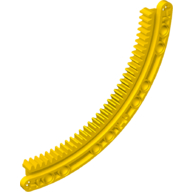
It's not often that LEGO releases a new part that fills a significant gap in their inventory but, this year, the release of the 11x11 Circular Gear Rack has filled a gap in the Technic range of parts.
Earlier in the month, Huw outlined the new Technic parts for 2016. This article looks at the geometry of this new part, and how it can be incorporated into your Technic models.
Technic aficionados, and anyone else interested in the geometry of LEGO parts can read on to see how versatile this new part will be.
As the part name implies, this new part occupies an 11M square. Four of these parts can be joined together to make a circle rack 21M in diameter.
There are eight groups of five holes, equally spaced around the circumference. Using a Technic 11M Beam as a guide, it is possible to make a hexagon inscribed in the circle.
A second hexagon can be inscribed on the circumference, giving 12 equally spaced vertices.
Taken to the extreme, there are 24 equally spaced holes on the circumference. Any regular polygon can be made where the number of sides is a factor of 24.
The remaining 16 holes are not equally spaced: they are slightly closer to the outside holes of each group of five holes.
These remaining holes allow for one Technic 5M Beam to be connected to each group of holes.
It is also possible to connect a 13M Beam as a chord to the circle.
The radius of the holes on the circumference is 10M (½M is lost at each end of the 11M beam). The diagonal of a quadrant is 14.1M (√200). While this may be considered an illegal connection, it is possible to have 15M Beams inscribing a square on the circumference. It is a tight squeeze though.
This PDF written by Jamie Berard describes illegal LEGO connections.
A better method is to use a pair of Double Angular Beams 3x7 45°. This construction method has two advantages: the 0.1M of the diagonal is absorbed by the 45° of the angled beam and the beams get a third, and stronger, connection to the circumference.
Each circular rack has 35 teeth making a 140-tooth gear when they are joined together. The 12-tooth bevelled gear meshes with the circular rack. Other gears do not easily mesh directly.
The Circle Gear Rack is NOT compatible with the straight 14M Gear Rack found in the 42043 Mercedes Benz Arcos 3245.
I have tried to make a roller bearing cage but this has proved to be elusive.
The 4481 Hailfire Droid wheels remain the largest circular gear rack, but these parts are rare and expensive.
There are 14 circular gear racks in 42055 Bucket Wheel Excavator. Hopefully this part will be seen in more Technic sets in different colours.
38 likes
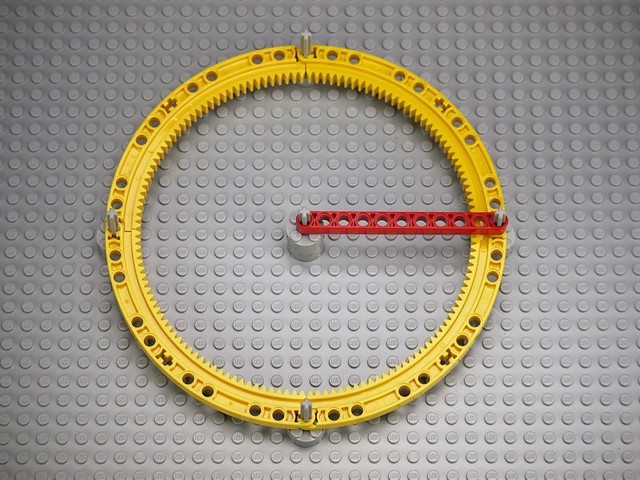
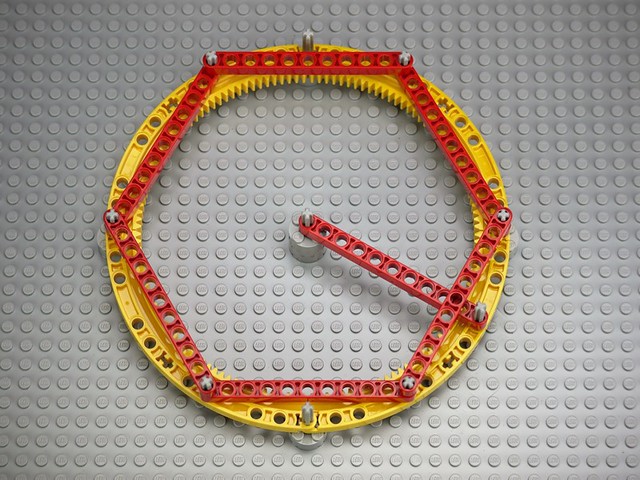

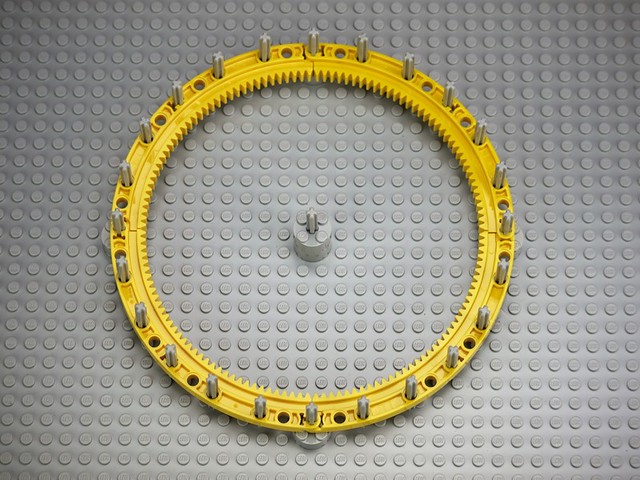
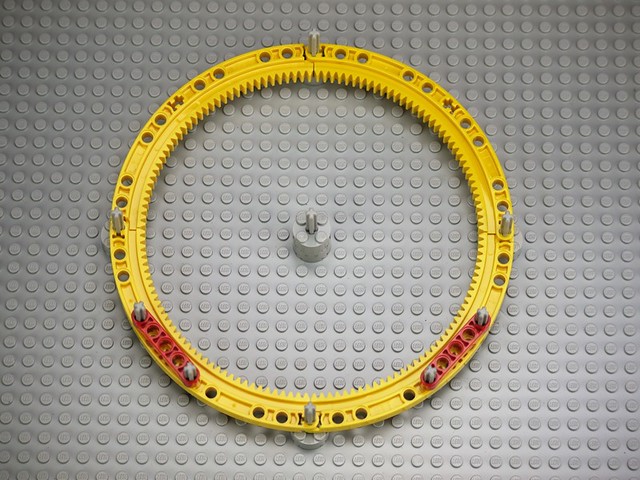
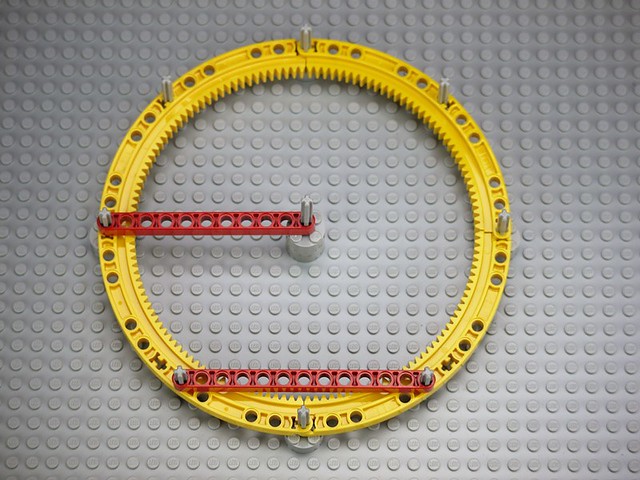

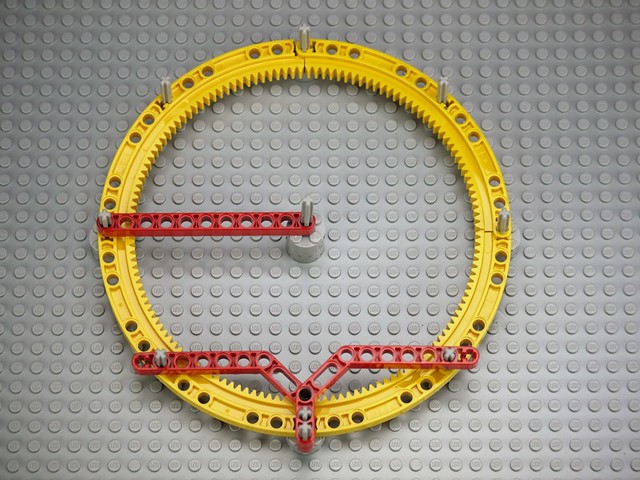
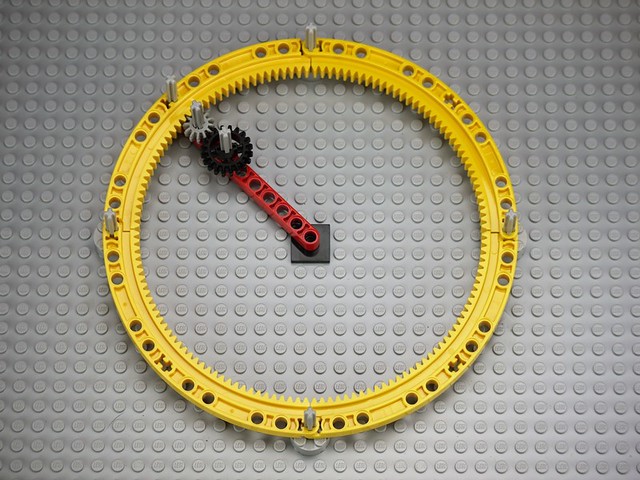

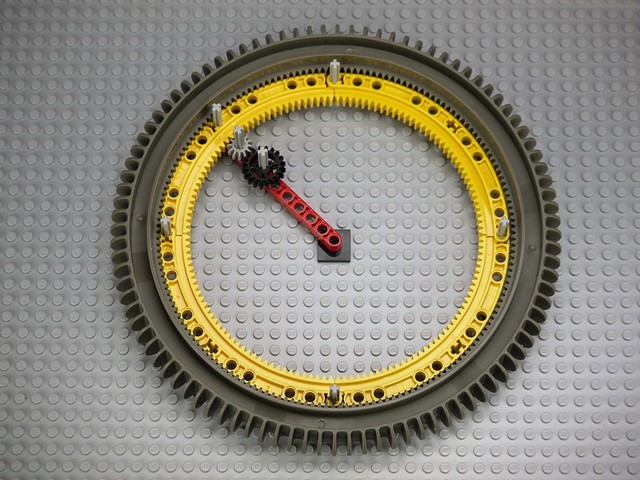
16 comments on this article
Planetary gears... planetary gears...
Otherwise, there may come a day when this part gains external teeth. That's gonna be a hoot for GBC, clocks, and bigger slewing applications.
I am very interested in using this part as a wheel- does it feel strong enough to hold a couple pounds?
Very neat, thank you!
They could make a really humongous motorcycle with this, or something like it... LEGO! Do something creative with this thing! ASAP! :P
I appreciate the focus on this part; I'm thinking of ordering some at some point in the future...
I understand that the "M" stands for studs, so something that's "5M" is 5 studs long, but why is it "M"? What does the letter stand for?
M = Modules, I believe.
Yeah M is for modules. It's common to talk about the spacing between studs or describing a model in terms of stud length, but that says nothing about the dimensions of a Technic beam, or an axle, or a whole brick.
@PicnicBasketSam : you mean, like the bucket wheel excavator?
When last month I suggested a hybrid Technic-Creator astronomical observatory, I was thinking about this piece. Even though they're £2.50 a pop on Bricklink, it's worth buying a few...
Articles about the possibilities of new pieces are my favourites on brickset.com, and this is a great example. My only complaint is the use of the terms "legal" and "illegal" when it comes to joining LEGO.
The 13M as a chord works because those points are on Pythagoras triangles of 3/4/5 (6/8/10) as Barman and I worked out when the first pictures were available:
https://www.flickr.com/photos/duq/24132835204/in/dateposted/
^ That was some geometry that I didn't notice. Thanks for adding it.
Pretty cool new piece!
Speaking for the non-techies, what will they think of next? This looks pretty darn cool to me! And Duq's diagram was first class!
Cool!
This is why I love this site :)